Through the Eyes of the former Consul General Yamada (June, 2017 - July, 2020)
2018/12/21

A Story about Polish Orphans in Siberia who Returned to Poland by Way of Tokyo and Seattle
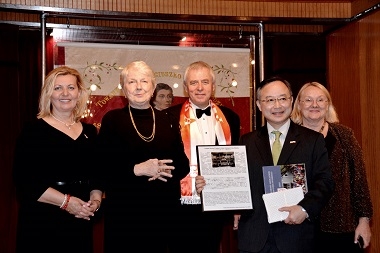
(left to right) Honorary Consul Teresa Indelak Davis, Martha Golubiec,
Polish Home Association President Pawel Krupa, me, Anna Domaradzka (Daughter of Siberan Orphan)
Polish Home Association President Pawel Krupa, me, Anna Domaradzka (Daughter of Siberan Orphan)
On November 10, after attending the Veterans Day memorial event at Nisei Veteran’s Committee Memorial Hall, I attended another ceremony held at the Polish Cultural Center. One hundred years prior to that day (although it was already November 11 in Europe, taking time zone differences into account), World War I ended, and Poland regained its independence for the first time in 123 years. The reason I was invited to this centennial celebration is rooted in a series of events that happened in Seattle about one hundred years ago, which deeply entwine both Japan and Poland.
In 1795, Poland was divided and merged into Prussia and Russia. Its people revolted many times in attempts to regain their independence, which further intensified oppression by Russia. Many political criminals as well as workers recruited for railway construction were sent to Siberia and forced to work under severe conditions. Including their offspring, it is said that as many as forty to fifty thousand Polish lived in Vladivostok and the Siberian Far East at the time.
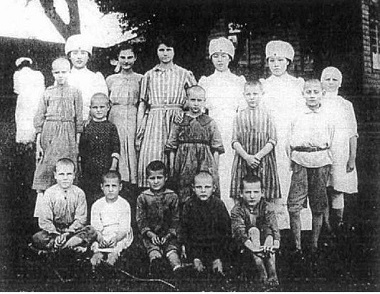
Polish orphans from Siberia and Japanese nurses (Fukudenkai, 1922),
quoted from "A History of Japan-Poland Relations"(Sairyu Publishing Co.), p90
When the Russian Revolution occurred in 1917, civil war broke out between the Red Army and the White Army. In the chaos, Poles living in Russia became refugees, and many escaped to the Far East. It’s believed that the number of such refugees reached somewhere between one hundred and fifty thousand and two hundred thousand. Many perished and as a result, many became orphans. When World War I ended and Poland regained its independence, the Polish Rescue Committee was formed in Vladivostok to send such orphans back to Poland. However, taking route through Russia was too dangerous due to the country’s civil war. Committee leader Anna Bielkiewicz, after seeking help from other countries unsuccessfully, decided to go to Tokyo and appeal to the Japanese Ministry of Foreign Affairs (MOFA). MOFA then contacted the Japanese Red Cross Society, which, with the support of other organizations, including Buddhist groups, took on a leading role in the relief efforts to save Polish orphans.
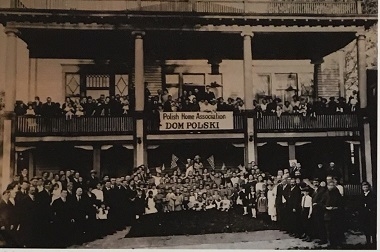
Picture of Polish Home Association
From the two missions in 1920 and 1922, 765 orphans in total left Vladivostok for the Tsuruga Port by Japanese army transport ships. In the first mission, 375 orphans were sent to an accommodation facility in Tokyo and recovered their health there. Divided into eight groups, they then went over to Seattle, crossed the United States, and went to Poland. In the second journey, the other 390 orphans stayed in Osaka, and then returned to Poland via the Suez Canal. Thus, all 765 orphans safely went back to Poland. At the Polish Cultural Center in Seattle, there are pictures of orphans who arrived in Seattle on their way back to Poland, with descriptions of the images in three languages: Japanese, Polish, and English.
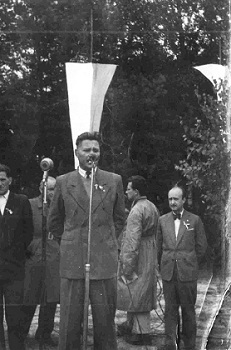
Jerzy Strzałkowski in 1957 (Photo by Izydorczak, Wikimedia Commons)
These orphans kept in touch with each other in their youth and formed a mutual support organization called The Far East Youth Association. According to records from 1938, the association had 434 members at the time. When World War II began and Poland was divided again between Nazi Germany and the Soviet Union, Jerzy Strzałkowski, the founder of the Far East Youth Association, founded an orphanage for children in Warsaw, a city occupied by the German army. At the same time, he also formed an organization called Powstańcze Oddziały Specjalne Jerzyki. It is believed that a few thousands of people all over Poland, including children in the orphanage, joined this underground organization to resist the German army. Jerzy Strzałkowski lived through communist Poland and died in 1991, when the country achieved a free society. There are some Siberian orphans who, due to their resistance activities, were arrested and sent to Auschwitz, but survived. What a tumultuous life many of the Siberian orphans lived.
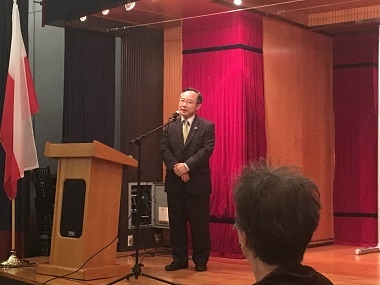
Speaking at Ceremony on November 10
In the ceremony of the 100th anniversary of Poland’s independence, Teresa Indelak Davis, Honorary Consul of Poland, gave a greeting and spoke of an episode about the orphans. I also gave a greeting and introduced myself, mentioning that I worked in Poland from 1999 to 2001. I also shared the old episode about Polish orphans and mentioned that in 1996, Poland warmly hosted Japanese children orphaned by the earthquake in Kobe and during their stay, elderly Siberian orphans talked to the children about their own childhood experiences. When I finished my speech the audience, led by no individual in particular, started to sing a Polish birthday song, “Sto Lat” (meaning 100 years old in Polish), which I mentioned in my speech. The song ended up being sung by a huge chorus of about 200 participants. At the ceremony, I met Mrs. Anna Domaradzka, whose father was a Siberian orphan, and she told me that she had been to Japan and visited areas associated with the orphans. She is planning to travel next year, following her father’s footsteps through Harbin, Vladivostok, Tsuruga, and Tokyo.
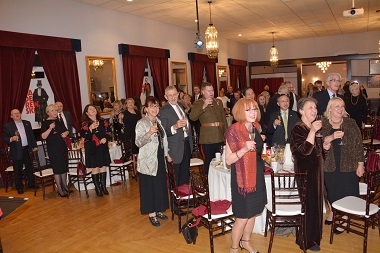
Singing “Sto Lat”
On November 15, my wife, son, and I went to a Chopin concert, which celebrated the 100th anniversary of Poland’s independence, by Polish pianist Janusz Olejniczak, In early November, Mr. Olejniczak held concerts in multiple cities in Japan (Japanese people, including me, really love Chopin, don’t they?), and on the 14th, he performed at Carnegie Hall in New York City. He is actually known as the pianist who played the piano for the movie The Pianist. I have a strong attachment to this film because the story of the film created an occasion to meet my wife. For his concert, Mr. Olejniczak changed the original program so that he could express the spirit of Poland in all of his music. The concert started with “Nocturne No. 20, Op. posth,” which Władysław Szpilman, the Jewish pianist, played to prove he was a pianist when a Nazi German officer found him in the shelter where he was hiding in German-occupied Warsaw. The last piece of the first section was “Military Polonaise,” while “Heroic Polonaise” was played in the last of the second section. The encore ended with “Revolutionary Etude.” It was a wonderful night of overflowing emotions such that I had not experienced for a long time.

Janusz Olejniczak (Photo Source: Adam Bielawski, Wikimedia Commons)
